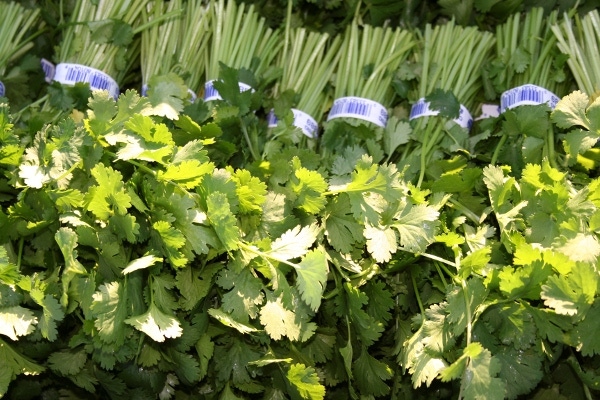August 23, 2013

The Arizona Vegetable Integrated Pest Management Update from the University of Arizona (UA) Cooperative Extension in Yuma, Ariz. released Aug. 21, 2013.
Bagrada bug management on desert cole crops
By John Palumbo, UA research scientist and Extension specialist
With the fall produce season quickly approaching, now is a good time to think about Bagrada bugs.
It has been four years since this invasive species first showed up in the low desert. It has clearly found a home on local cole crops. Last year, populations were higher during the fall than seen to date.
Over this summer, there were reports of Bagrada bug adults found in alfalfa seed, sudangrass and weeds. The bug was found in the Yuma Valley as recently as this week on broccoli seedlings.
What should a pest control adviser expect for this season? I don’t know for sure, but do not become complacent just because Bagrada is not found on the first sets. Assume the bug will eventually show up in some intensity on some acreage. Prepare for them accordingly.
Monitoring for Bagrada at stand establishment should focus on fresh-feeding signs on new plant tissue, and adults later in the day when the bug is most active.
Research and anecdotal observations in fields conducted over the last two years suggests that direct-seeded and transplanted crops are most susceptible to Bagrada bug infestations during stand establishment (cotyledon to the 4-leaf stage).
Results suggest that it does not take a large number of Bagrada adults to cause significant stand losses, and-or crop injury. If fresh feeding signs and-or adults are found in young stands then control should be initiated.
This can include chemigation with pyrethroids, and using contact insecticides (pyrethroids, Lannate, and Lorsban) once stands are lined out and pipe is pulled.
After stands are established and plant size increases up to the 1-2 leaf stage, or on tagged transplants, consider alternating to dinotefuron (Venom/Scorpion) to protect plants from Bagrada feeding. This neonicotinoid will also provide knockdown of adult whiteflies and nymphs.
More information on Bagrada bug management on fall cole crops can be found in these Veg Update briefs:Bagrada Bug Management Tips for the Low Desert and Knockdown and Residual Control of Bagrada Bug with Foliar Insecticides in Broccoli: 2013 Efficacy Report.
Listen to John's Update.
“Remember, when in doubt - scout.”
Contact Palumbo: (928) 782-3836 or [email protected].
Plant-derived chemicals as disease inhibitors
By Mike Matheron, UA Extension Plant Pathologist
Chemicals are indispensible tools in the continuing effort to minimize crop losses due to plant diseases. Various active ingredients within fungicides are especially useful for managing diseases caused by many fungal plant pathogens.
Although often not recognized, various substances formed by plants, and present before infection, can enable plants to defend themselves against potential plant pathogens. The level of defense against potential plant pathogens can range from various levels of resistance to outright immunity.
A variety of chemical substances are present on the surfaces of plant parts including leaves, stems, fruit, seeds, and roots. Chemicals with antimicrobial properties include phenolic compounds, tannins, and fatty acid-like materials.
Experiments have shown that some of these compounds have an inhibitory action on certain plant pathogens.
As an example, toxic exudates on leaves of a specific variety of sugar beet are present in sufficient concentrations to inhibit spore germination of certain fungal pathogens. Another compound in certain types of tomato plants was shown to impart resistance to powdery mildew by inhibiting spore germination.
Proteins and enzymes on plant surfaces can inactivate pathogen enzymes which are essential for disease development. The pre-formed compounds, together with various types of structural plant disease defenses, often drive resistance to diseases in plants.
Even if these plant derived chemical and structural disease defense systems are not sufficient to totally prevent disease, the systems, along with disease management tools applied by growers, can contribute to the overall level of disease suppression obtained on a particular crop.
Click link to Mike's Update.
Contact Matheron: (928) 726-6856 or [email protected].
Kerb chemigation on lettuce
By Barry Tickes, UA area agriculture agent
Unlike Prefar and Balan, Kerb does not adhere strongly to soil. Balan and Prefar adhere very strongly to the soil. Balan should be mechanically incorporated. Prefar needs a lot of water put over the top to be adequately incorporated.
Kerb is the opposite. It will move below the germinating weeds if too much water is applied.
We conducted a few trials several years ago to get an idea how long it should take to run Kerb through the sprinklers when chemigating and how much water to put on after it is applied.
Based on the findings, every field and year can be different. The injection times were 30, 60, and 90-minutes and the amount of water applied after injection was 0, 4, 8, and 12 hours. Thirty minutes was too fast to inject the Kerb. Sixty minutes was better, and 90 minutes was best.
Sprinklers are surprisingly variable in water distribution. This variability is evened out by running sprinklers for longer rather than shorter periods of time. The longer it takes to chemigate the herbicide, the more evenly the distribution in the field.
The herbicide began to leach too deep after applying 8 hours of water continuously after injection. Much of it was gone after 12 hours.
Click link to listen to Barry.
Contact Tickes: (928) 580-9902 or [email protected].
The latest blog comments from Western Farm Press:
'5 Foods You Should Never Eat' list absurd
You May Also Like




